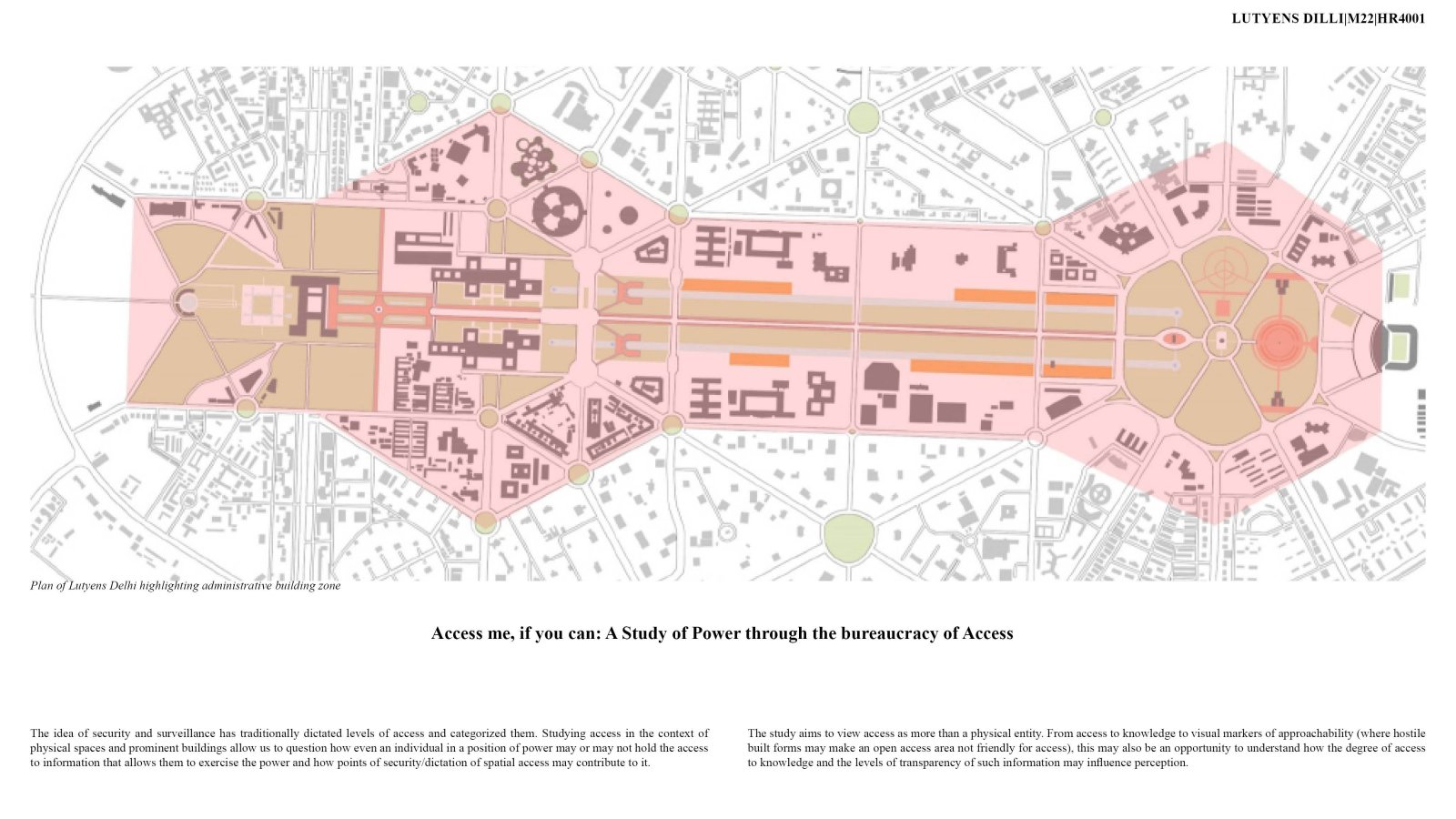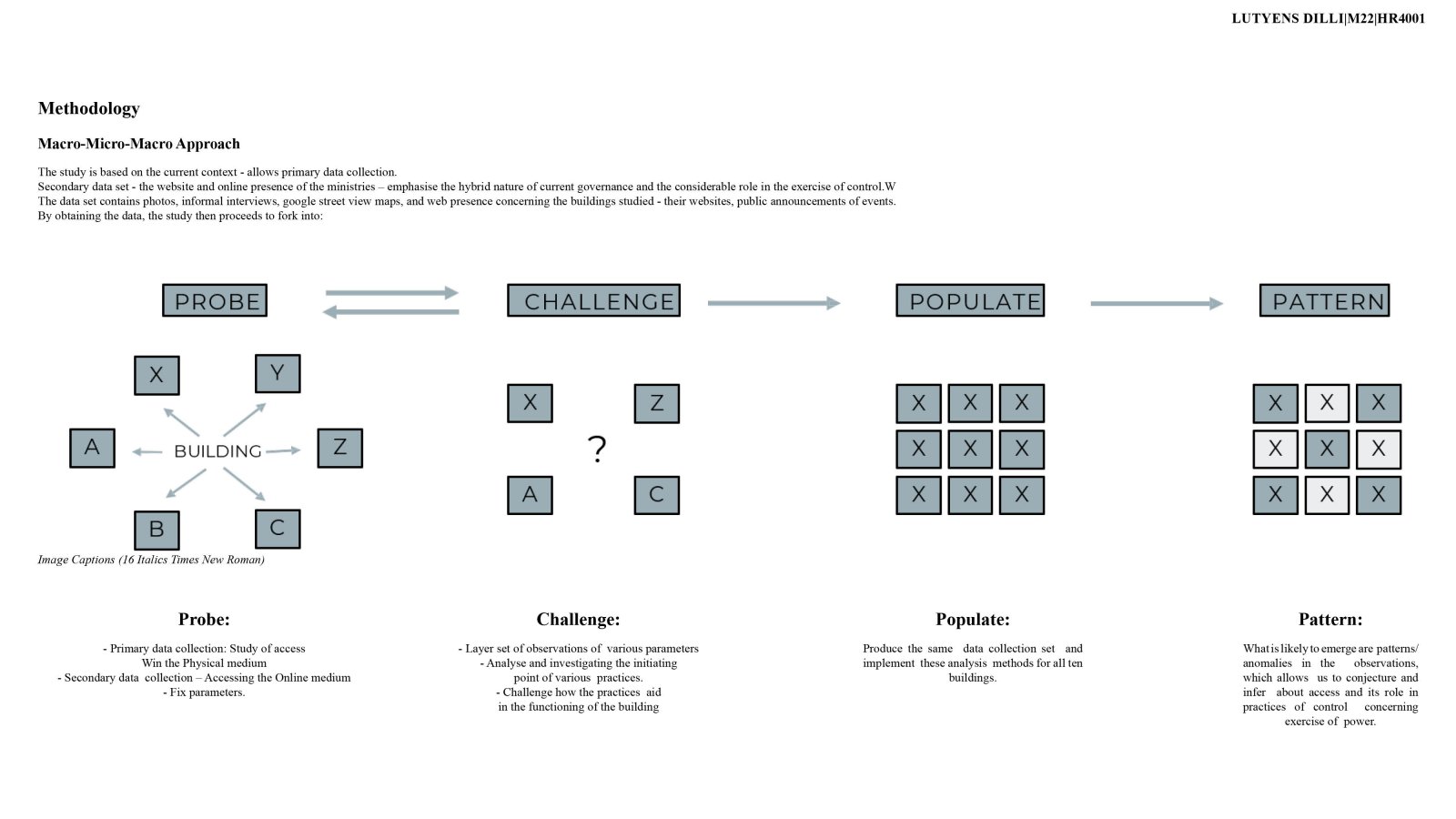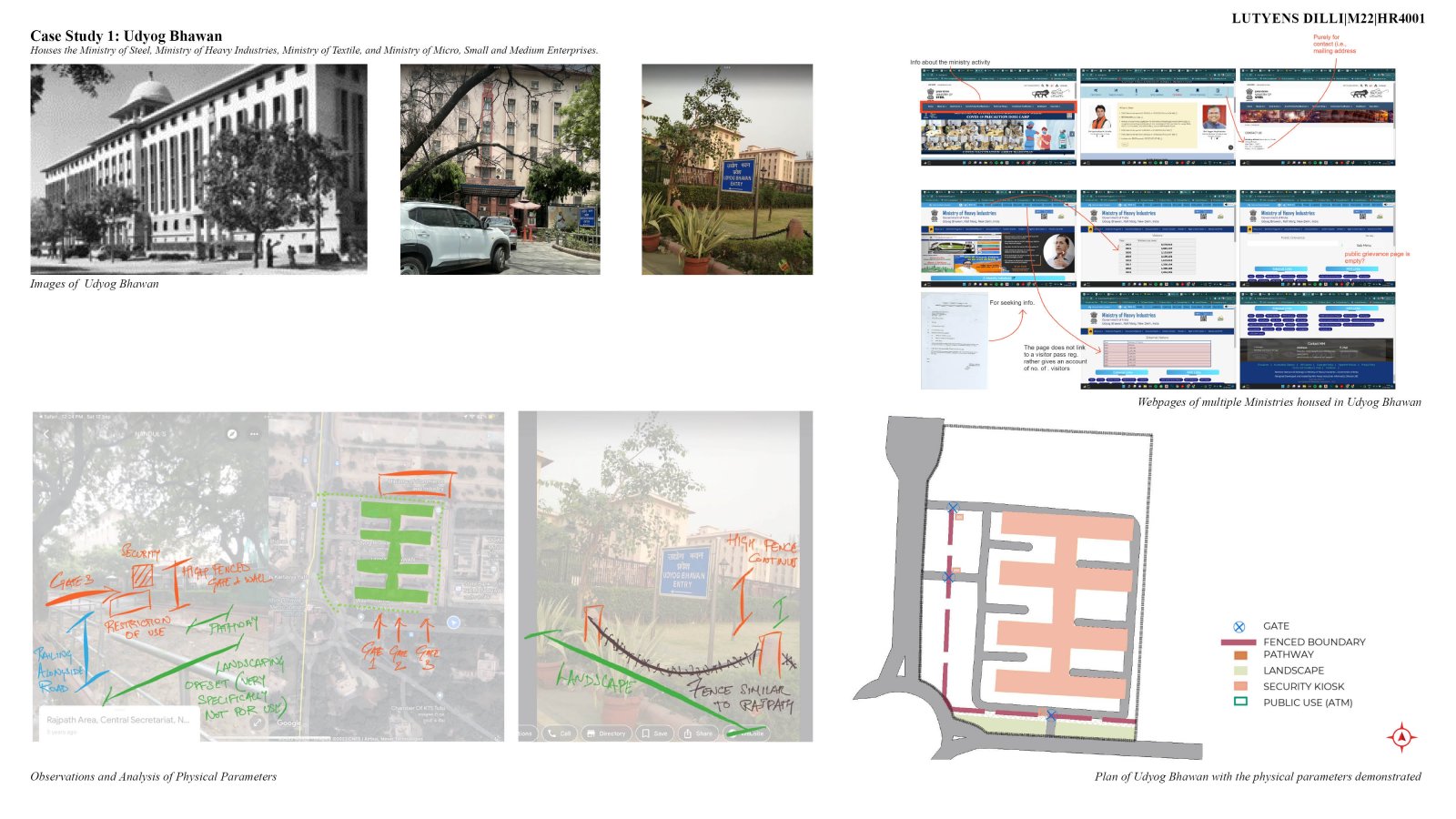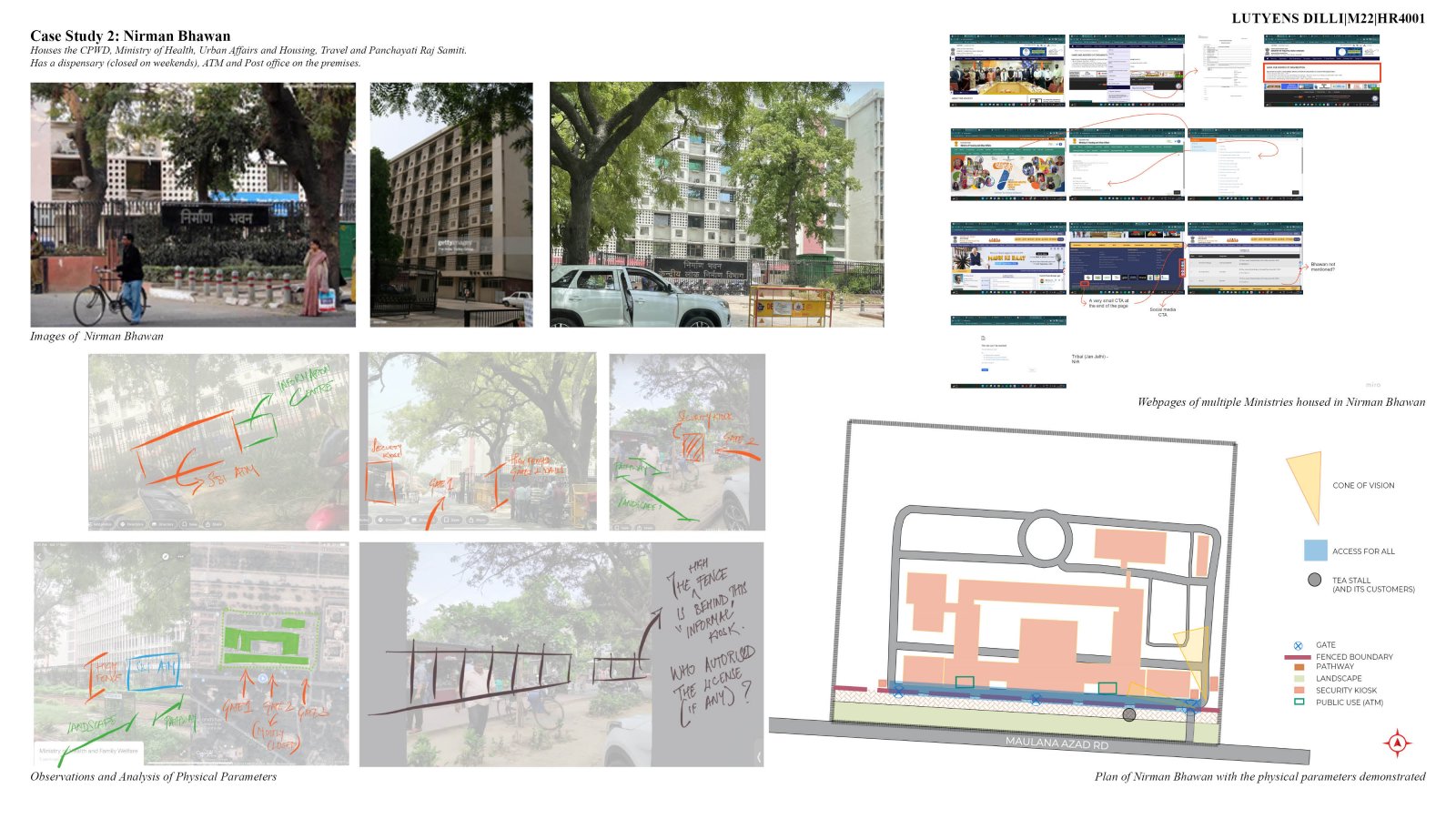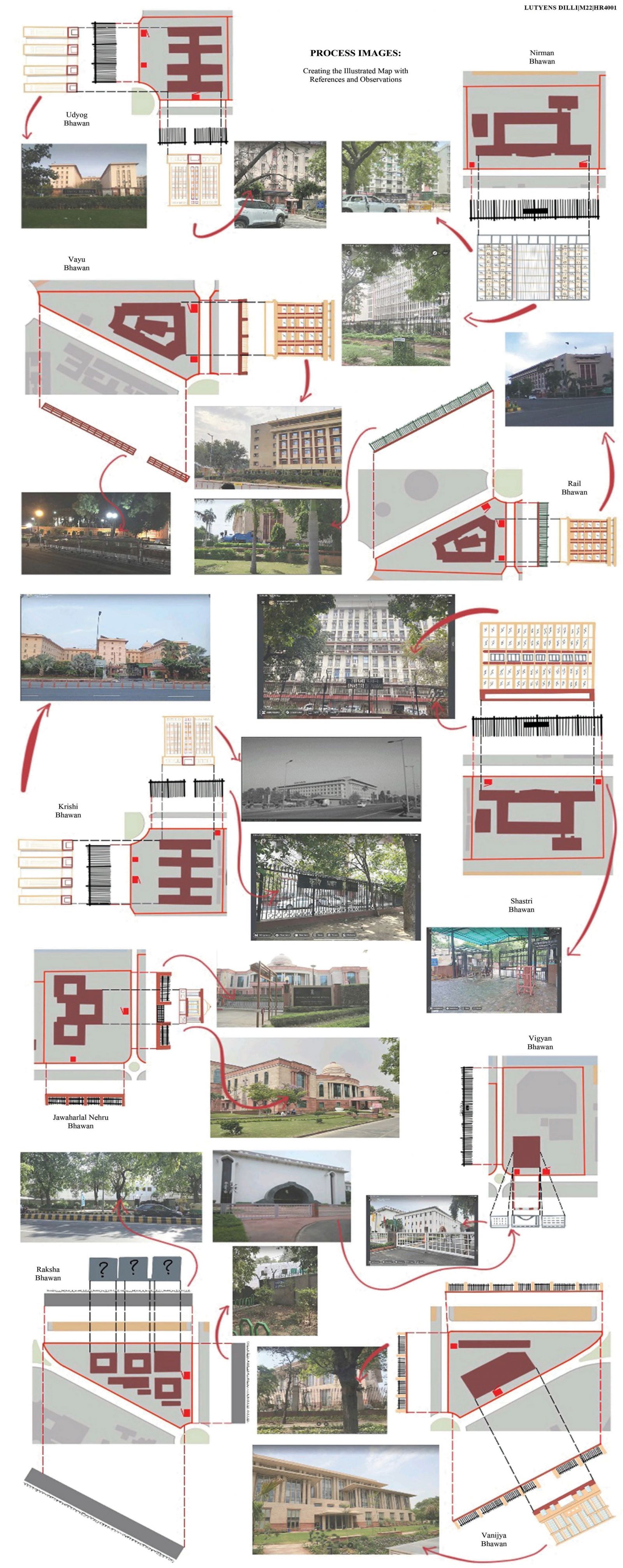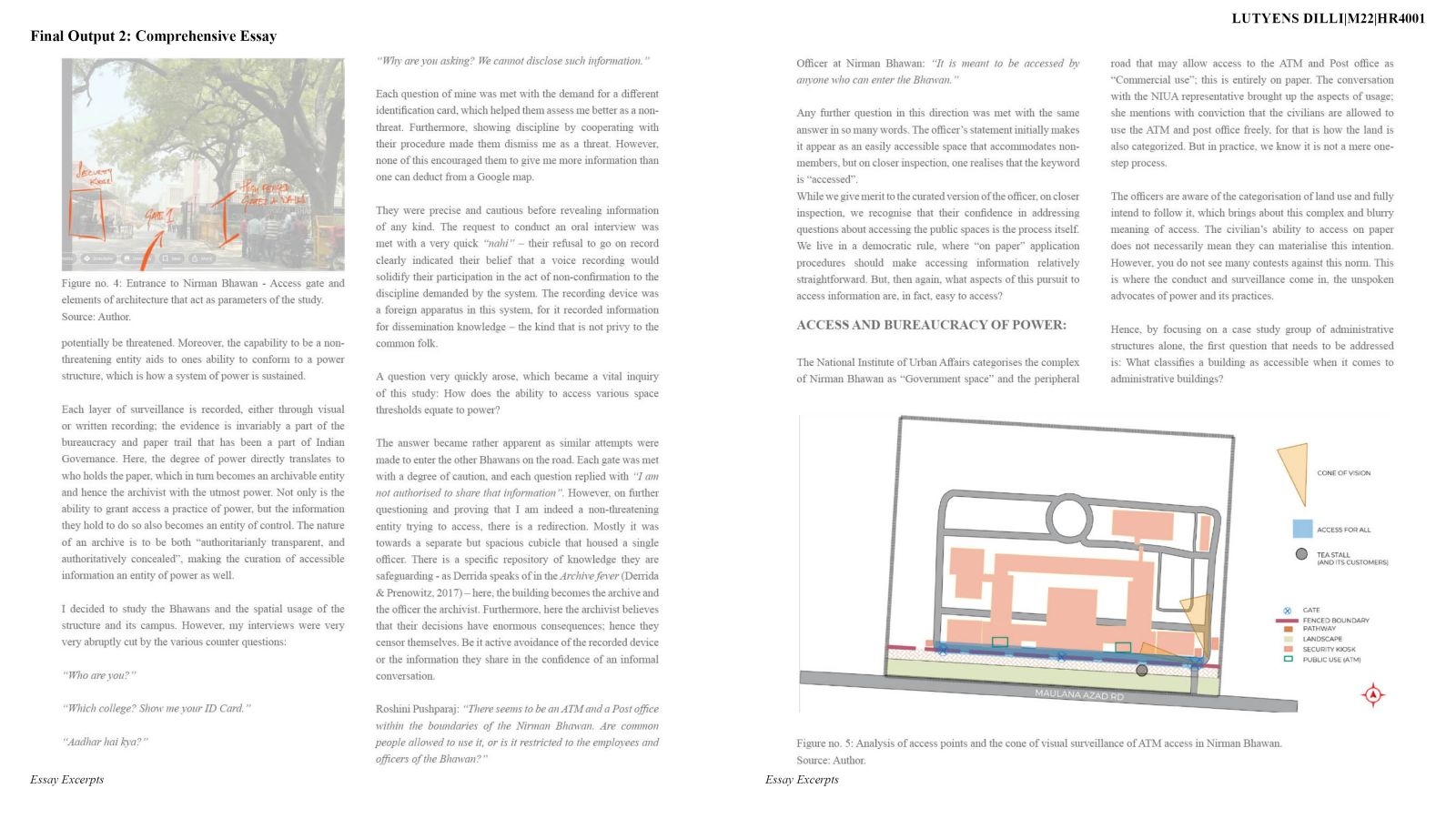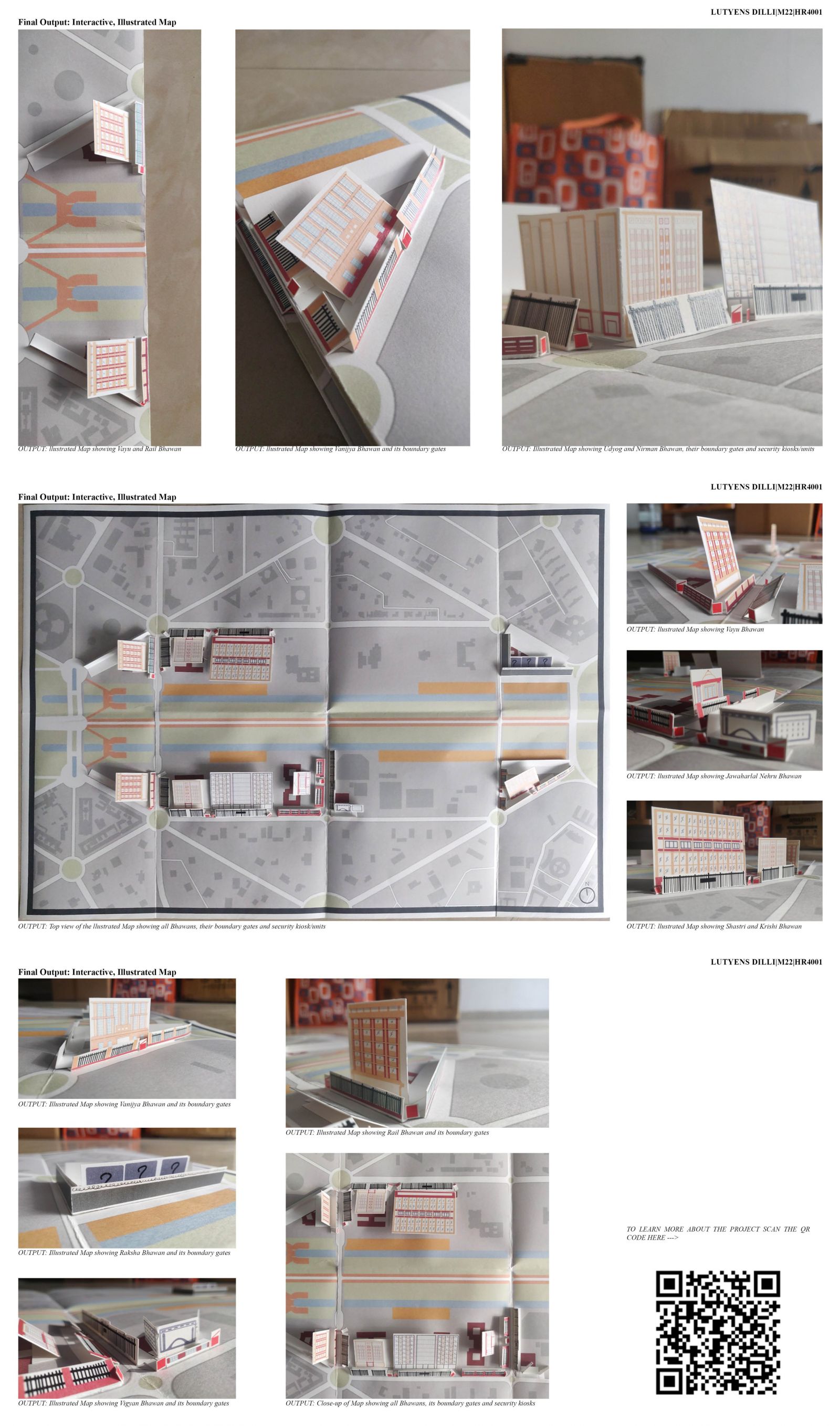Your browser is out-of-date!
For a richer surfing experience on our website, please update your browser. Update my browser now!
For a richer surfing experience on our website, please update your browser. Update my browser now!
The idea of security and surveillance has traditionally dictated levels of access and categorised them. Studying access in the context of physical spaces and prominent buildings allow us to question how even an individual in a position of power may or may not hold the access to information that allows them to exercise the power and how points of security/dictation of spatial access may contribute to it. What started as a simple “Why can I not enter the establishment?” was a question of “What am I supposed to or not supposed to see?”. Furthermore, it unveils an obvious answer. Despite varying construction periods, the consistent four-foot-wide pathways outside and the eight-foot-high boundary walls reveal a manicured image that a government building exhibits. The uniformity is a conformity to the discipline that the buildings represent. The study was done through 4 modules: Module 1: Input sessions where the data consumption and research are focused on understanding contexts that have existed to date in Lutyens Delhi Module 2: Selecting the topic, conducting literature reviews and designing the methodology. Data Collection Module 3: Data collation and analysis of the work concerning the theoretical framework opted. Module 4: Production of Output favouring Public Scholarship. The study aims to view access as more than a physical entity. From access to knowledge to visual markers of approachability (where hostile built forms may make an open access area not friendly for access), this may also be an opportunity to understand how the degree of access to knowledge and the levels of transparency of such information may influence perception.
View Additional Work